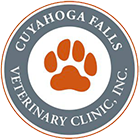We’ve touched on Rabies in the past and the importance of vaccinating our pets. The state and county health departments take Rabies very seriously. I recently received this e-mail from the Summit County Health Department and I’d like to pass some excerpts from the notification along to you, our clients and residents of Summit County:
 Beginning Monday, August 25, 2014, the United States Department of Agriculture (USDA) Animal and Plant Health Inspection Service’s Wildlife Services Program, in conjunction with several Ohio local health departments (LHDs), the Ohio Department of Health (ODH) and the Ohio Department of Natural Resources (ODNR) will begin distributing an oral rabies vaccine (ORV) to immunize wild raccoons. Fourteen northeast Ohio counties will be baited (see map). Contingent on good weather, the operation should be completed on September 19, 2014.
Beginning Monday, August 25, 2014, the United States Department of Agriculture (USDA) Animal and Plant Health Inspection Service’s Wildlife Services Program, in conjunction with several Ohio local health departments (LHDs), the Ohio Department of Health (ODH) and the Ohio Department of Natural Resources (ODNR) will begin distributing an oral rabies vaccine (ORV) to immunize wild raccoons. Fourteen northeast Ohio counties will be baited (see map). Contingent on good weather, the operation should be completed on September 19, 2014.
Although the chance for an exposure incident is considered remote, we want you to be familiar with the products and know what to look for in your patients in the event of a vaccine exposure.
This year we will be distributing two rabies vaccine formulations, Raboral V-RG® (Merial Inc.) and ONRAB® (Artemis Technologies).
- Raboral V-RG® is a recombinant vaccine containing the rabies glycoprotein antigen bound to an attenuated live vaccinia virus vector (carrier). The vaccine is contained in a white plastic vaccine sachet and covered in an attractant containing fishmeal, fish oil, and a synthetic binder, with tetracycline hydrochloride added as a biomarker. Ohio has been using Raboral V-RG® since 1997. Over 150 million doses have been distributed in the U.S. and Europe with only two reported incidents. However, since two incidents have occurred, it should be noted that pregnant women, persons with eczema, or persons in an immune-suppressed state may be at risk for infection from the vaccine carrier, especially if the vaccine is introduced into a wound or scarified skin and no attempts are made to wash and disinfectant the skin after contact with the bait. Physicians should be alert for papules or vesicles at the site of exposure, with possible local erythema and regional lymph node involvement.
- ONRAB® is also a recombinant rabies vaccine, but the vaccine vector is a live human adenovirus type 5. The vaccine is contained in a blister pack, covered in a waxy green coating containing vegetable fats and wax, a sugar vanilla attractant and a tetracycline biomarker. This vaccine has been used successfully in Canada since 2006 with no reports of adverse incidents in humans. Ohio is one of five states involved in this year’s first large field trial in the U.S. Most people have acquired immunity to adenovirus type 5 in early childhood, but persons who are pregnant or immunocompromised may be susceptible to infection if vaccine is introduced into a wound, eye or ingested. Exposure may result in fever, sore throat, headache, conjunctivitis, vomiting, or diarrhea.
There is no exposure risk in handling an intact bait. As a precaution, though, always recommend that people wash their hands thoroughly with soap and water after handling any rabies vaccine bait.
Below are some additional recommendations for patients or clients finding ORV baits:
- Do not attempt to remove an ORV bait from an animal’s mouth, as you could be bitten. Ingesting vaccine will not harm your pet. Vomiting from the plastic sachets and diarrhea from the fishmeal have occurred in dogs that have ingested multiple baits.
- Confine your pet and look for other baits in the area. Baits can be removed from the area where your pet could find them and eat them.
- Wear gloves or use a towel when you pick up a bait. Although there is no harm in touching an undamaged bait, they have a strong fishmeal smell. Gloves or a towel will protect your hands if you have any small cuts.
- Wash your hands and any exposed skin thoroughly with soap and water if there is any chance that the vaccine sachet has been ruptured and its contents have gotten on exposed skin.
- Advise people who have skin, mucous membrane or eye contact with vaccine, as well as those who have eczema, have exposed breaks in skin, are pregnant, or are immunocompromised to seek medical attention if they experience any rash, fever, sore throat, headache, conjunctivitis, vomiting, or diarrhea within 21days of the exposure.
In the event of human or pet contact with the bait/vaccine, have the caller contact the Rabies Information line at 614-752-1029, option 4.

